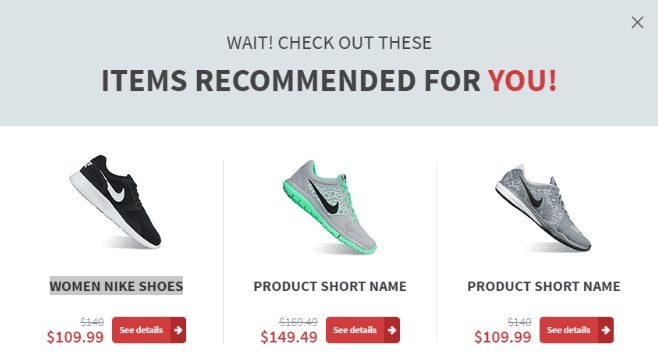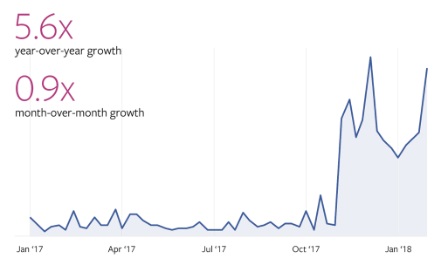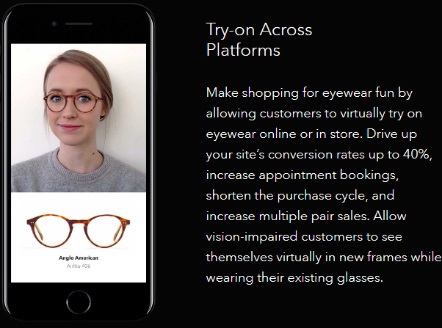E-Commerce Trends You Must Embrace to Succeed

In today’s digitized business environment, where the internet’s role has shifted from an information hub to a shopping tool, businesses are competing with a weapon called ‘e-commerce.’ And no one can win without the help of something very important – the ability to change.

Image Source: https://www.shopifyandyou.com/blogs/news/statistics-about-shopify
Change is a fact of life, and it’s no different in the world of e-commerce. It is evident in advancements in technology, changing customer behavior, and mobile usage, which is continually on the rise – in 2018, purchases on mobile increased by 55%.
With the fast-paced evolution of e-commerce, it’s important to keep up with the latest consumer and technology trends online. Here are some of the top emerging e-commerce trends you should be noting if you want to succeed:
Personalization and Customer Engagement Go Hand-In-Hand
What is meant by a ‘personalized’ experience?
Let’s say a visitor is browsing sneakers in the Nike store online. Then, the next time they visit, they are shown offers and recommendations for various Nike shoes. This remarketing technique creates a powerful, personalized experience for the user, with the main aim of motivating the visitor to become a customer.

Image Source: https://essenceofemail.com/5-email-personalization-tips-increase-customer-engagement/
According to a study by Accenture, 41% of customers leave brands because of poor personalization, and 43% prefer businesses that make an effort to personalize their online experience.
The online shopping experience runs the risk of lacking that personal human touch people expect when they enter a brick-and-mortar store. Online, there’s no salesperson at the ready, asking “How can I help you?” or “Perhaps this sneaker might interest you?”
Personalization tactics, such as recommending products based upon the user’s interests and browsing history, can go a long way to making up for the lack of personal human contact.
Fifty-seven percent of online shoppers have no issues in forwarding personal information to a brand if it benefits their shopping experience. Use personal online data of visitors – page visits, search queries, and purchase history to transform your e-commerce business according to the needs and interests of your potential customers.
AI, Assistants, and Chatbots are No Longer the Future: They’re Here
Today, consumers want fast, accurate answers to their questions. During busy periods, it can be difficult for e-commerce businesses to keep up with customer queries by phone, email, live chat, and other channels. This is the moment when chatbots can help you fast-track customer queries 24/7.
According to Facebook IQ business data, this graph shows the growth of chatbot activity from January 2017 to January 2018:

Image Source: https://chatbotsmagazine.com/chatbot-report-2018-global-trends-and-analysis-4d8bbe4d924b
Gartner’s prediction that 25% of customer support and service operations will involve virtual customer assistants by 2020 seems to be coming true.
AI assistants will increasingly optimize, classify, and translate product content according to consumer demand, performing multiple roles, such as managing inventory, to answering questions about a product, to handling complaints.
For instance, Alibaba, the Chinese e-commerce giant, says that its AI-based copy-writing tool produces about 20,000 lines of copy a second, which is used a million times a day by vendors across its e-commerce sites.

Image Source: https://www.alizila.com/at-alibaba-artificial-intelligence-is-changing-how-people-shop-online/
Interactive Product Visualization
When shopping online, there’s something that’s happened to all of us – hesitation to hit the “Buy” button. This hesitation arises because of questions and doubts, including:
- Is this a quality product?
- Will this product solve my problem/need/desire?
Many people want to get a stronger sense of a product before actually making the purchase. Online reviews are very helpful, but the ability to touch a product is even better. Of course, this is impossible online, but there may be something which goes a long way to making up for it: interactive product visualization. Various visualization tools can give online customers a shopping experience that is closer to that of an in-store experience.
For instance, Ditto offers a virtual 3D “try-on” feature for retailers of eyewear products. Online customers can virtually try on glasses frames and see how they would look wearing them. This is a powerful way to replicate the physical in-store experience of “try before you buy”.

Image Source: https://www.ditto.com/
Even videos can be a huge help in building customer confidence online. According to one study, 52% of consumers say that watching product videos makes them more confident in the decision to purchase online. As people worldwide spend more time watching online video, e-commerce businesses should take this opportunity to attract visitors via video content and turn them into loyal customers.
PWAs Emerging as a Perfect Amalgamation of Website and App
2019 is the year that will witness the co-existence of e-commerce and mobile. PWAs (progressive web applications) are a new standard based on a hybrid between website and app, resulting in up to 10 times faster load time compared to mobile sites, and increased user functionality. It’s truly the best of both worlds.
With PWAs, brands can achieve a fast-loading, compelling mobile experience, similar to a native app experience, without needing to market a separate app.
How do PWAs work?
They transfer the workload to the device, rather than depending on the web server for every page, layout, click and image. This creates a standard experience, regardless of browser, device type, and internet connection.
West Elm home decor and furniture brand is a great example of the PWA browsing experience. The site uses large-sized product imagery and fixed header and footer elements to keep the key calls-to-action in easy view of visitors. The PWA saw a 15% increase in average time spent on site, and revenue per visit rose to 9%.

Image Source: https://www.mobify.com/insights/17-progressive-web-apps-for-your-inspiration/
Want to Succeed? Adapt to Changing Trends
The first ever online sale happened on August 11, 1994, when a man in Philadelphia used a special code to purchase a Sting CD album from a group of friends at the Net Market company in Nashua, New Hampshire. The e-commerce industry has come a long way since.
With every passing year, the e-commerce industry is evolving to simplify the online shopping journey through various platforms – yet this is only possible with increasingly sophisticated marketing technologies. Make sure to stay updated about these changing e-commerce trends – there will surely be plenty more to come.


